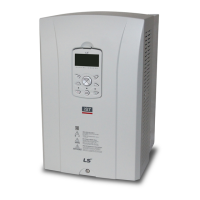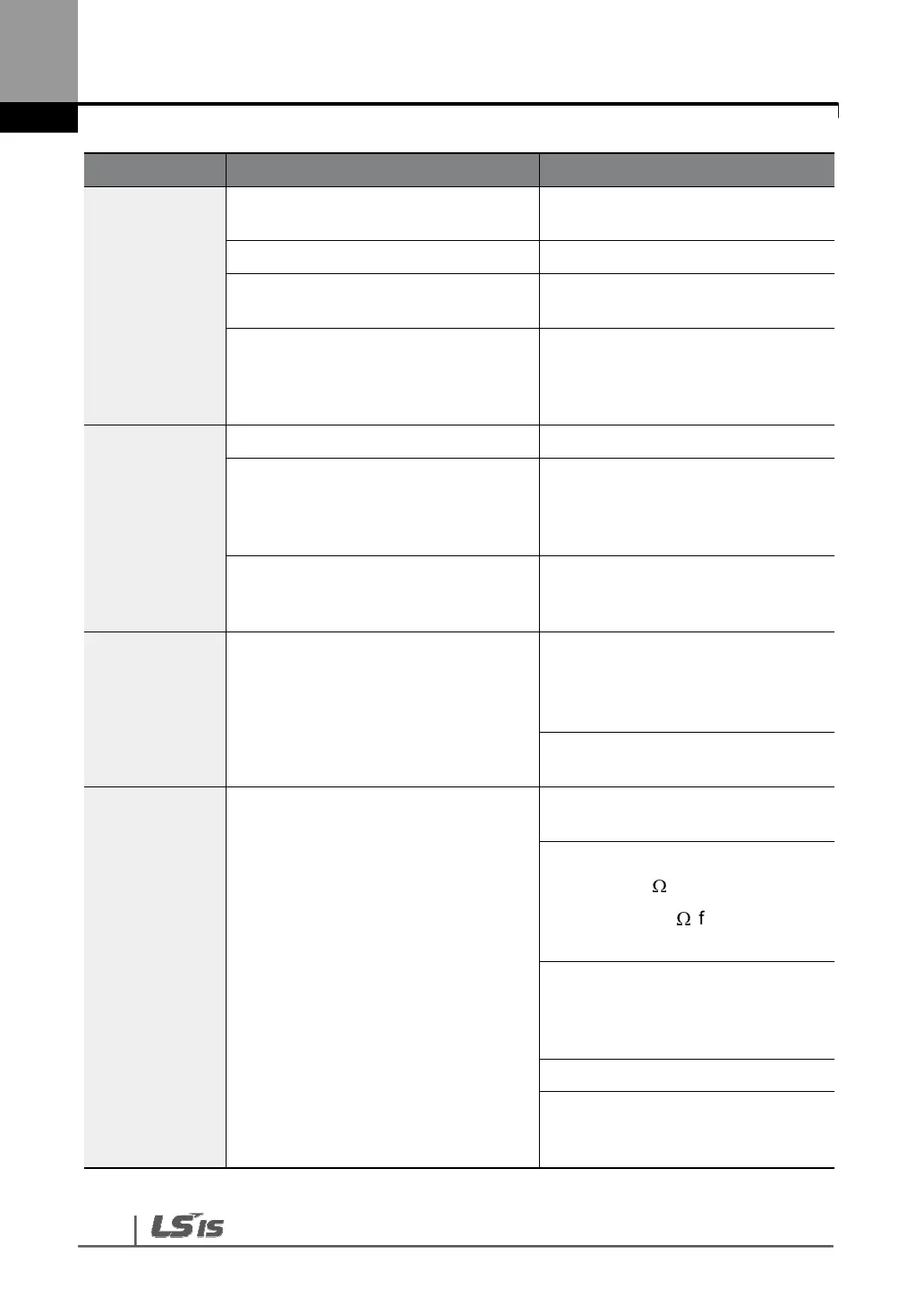82
Motor speed
varies during
operation.
There is a high variance in load.
Replace the motor and inverter with
models with increased capacity.
The input voltage varies. Reduce input voltage variation.
Motor speed variations occur at a
specific frequency.
Adjust the output frequency to
avoid a resonance area.
The motor
rotation is
different from
the setting.
The V/F pattern is set incorrectly.
Set a V/F pattern that is suitable for
the motor specification.
The motor
deceleration
time is too long
even with
Dynamic
Braking (DB)
resistor
connected.
The deceleration time is set too long. Change the setting accordingly.
The motor torque is insufficient.
If motor parameters are normal, it is
likely to be a motor capacity fault.
Replace the motor with a model
with increased capacity.
The load is higher than the internal
torque limit determined by the rated
current of the inverter.
Replace the inverter with a model
with increased capacity.
While the
inverter is in
operation, a
control unit
malfunctions or
noise occurs.
Noise occurs due to switching inside
the inverter.
Change the carrier frequency to the
minimum value.
Install a micro surge filter in the
inverter output.
When the
inverter is
operating, the
earth leakage
breaker is
activated.
An earth leakage breaker will interrupt
the supply if current flows to ground
during inverter operation.
Connect the inverter to a ground
terminal.
Check that the ground resistance is
less than 100
Ω
for 200 V inverters
and less than 10
Ω
for 400 V
inverters.
Check the capacity of the earth
leakage breaker and make the
appropriate connection, based on
the rated current of the inverter.
Lower the carrier frequency.
Make the cable length between the
inverter and the motor as short as
possible.

